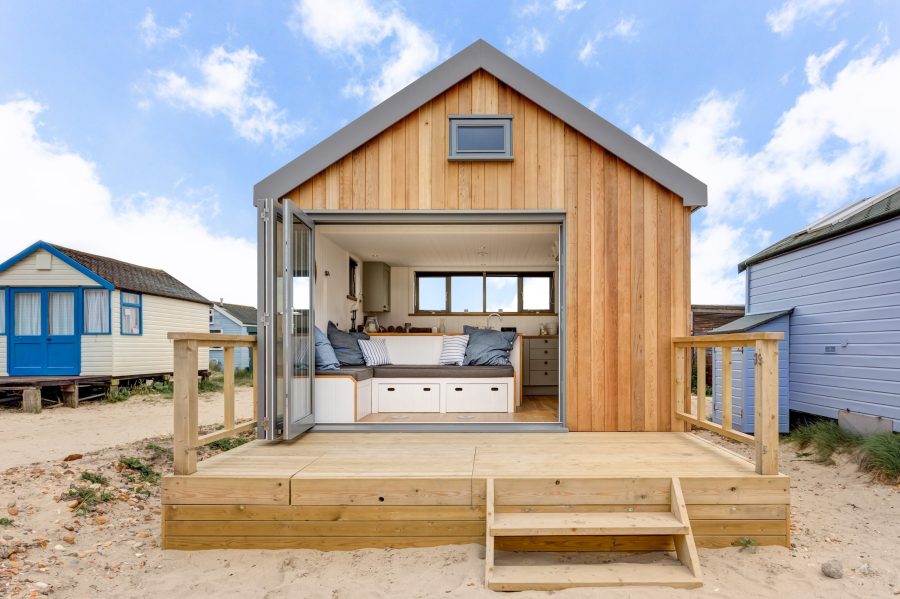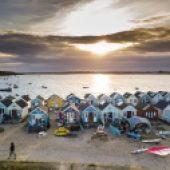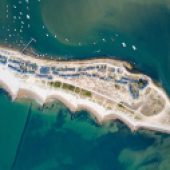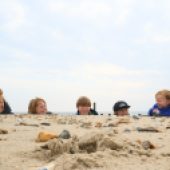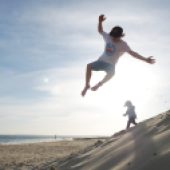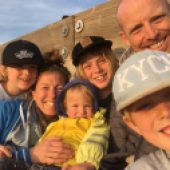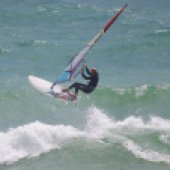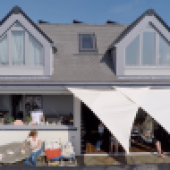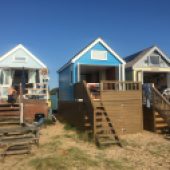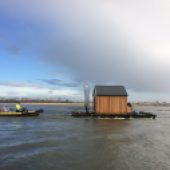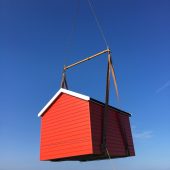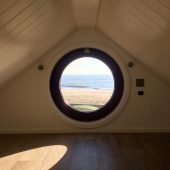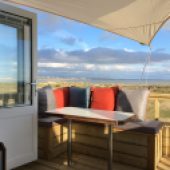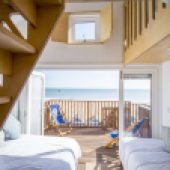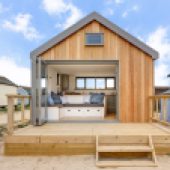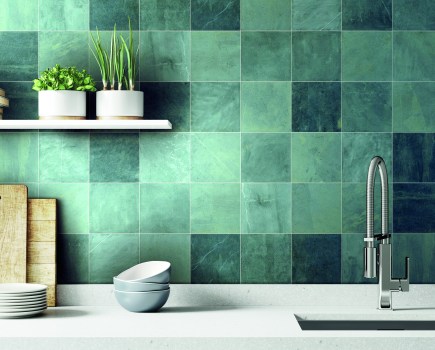When Pete Samson reaches the sandy, shingly beach across the road from his home near Southbourne in Dorset, it’s a choice between windsurfing, paddleboarding, surfing or swimming, depending on the weather. From his front door, set within a beach hut-style porch, it takes just 30 seconds to walk to the water’s edge and, on a calm day with good visibility, he’ll take his snorkel mask and go spearfishing. ‘As a family we love to hunt and gather as much as we can, and we feel very lucky to live here – it’s like we’re on holiday. Often, I’ll catch some bass, sole or plaice, sometimes lobsters or red mullet,’ says Pete, whose strong connection to the ocean helped him recover from burn-out last year after rebuilding his family home. ‘The sea was my therapy. Swimming healed me and completely re-centred my mind, along with some powerful breathing techniques.’
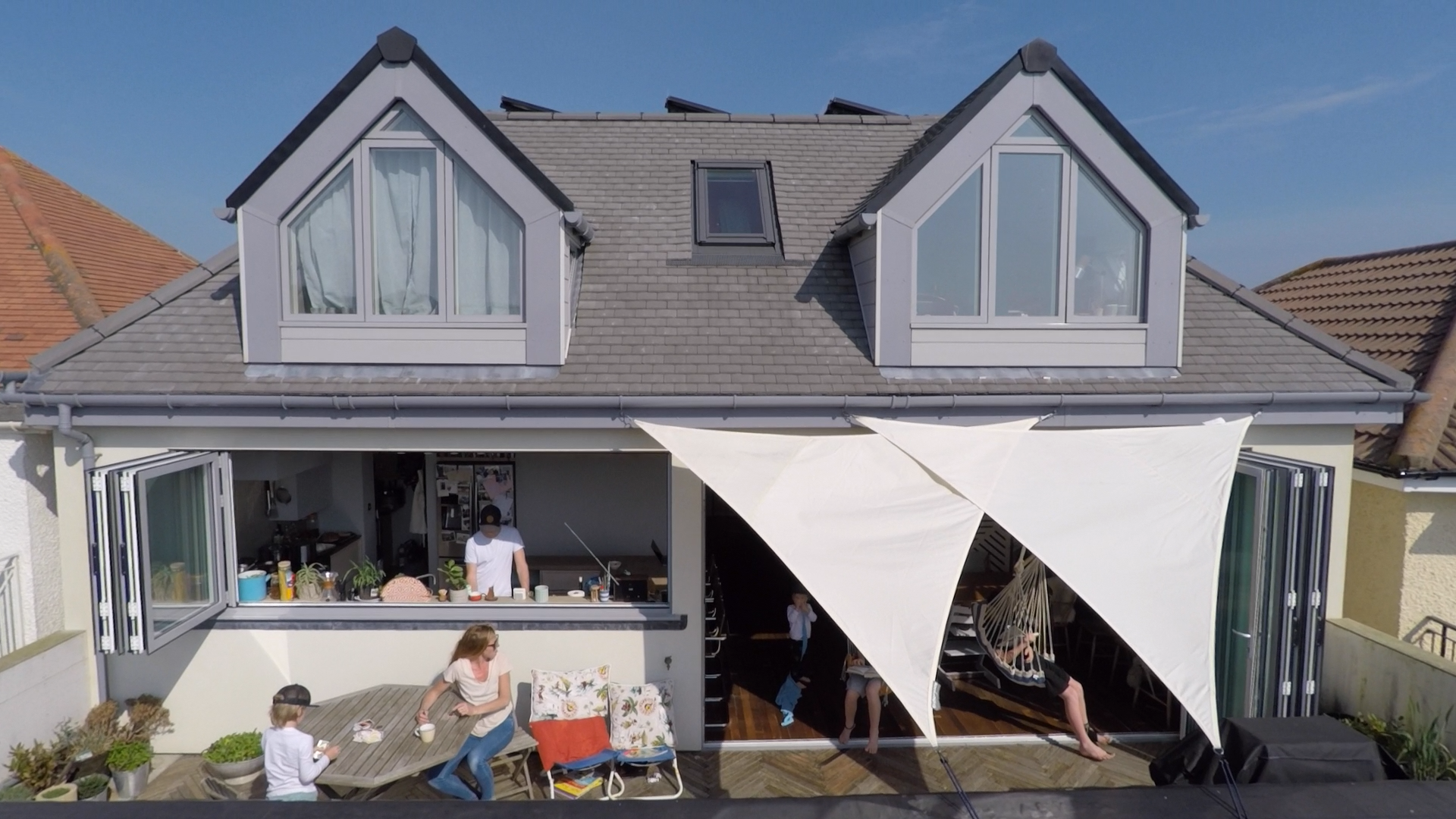
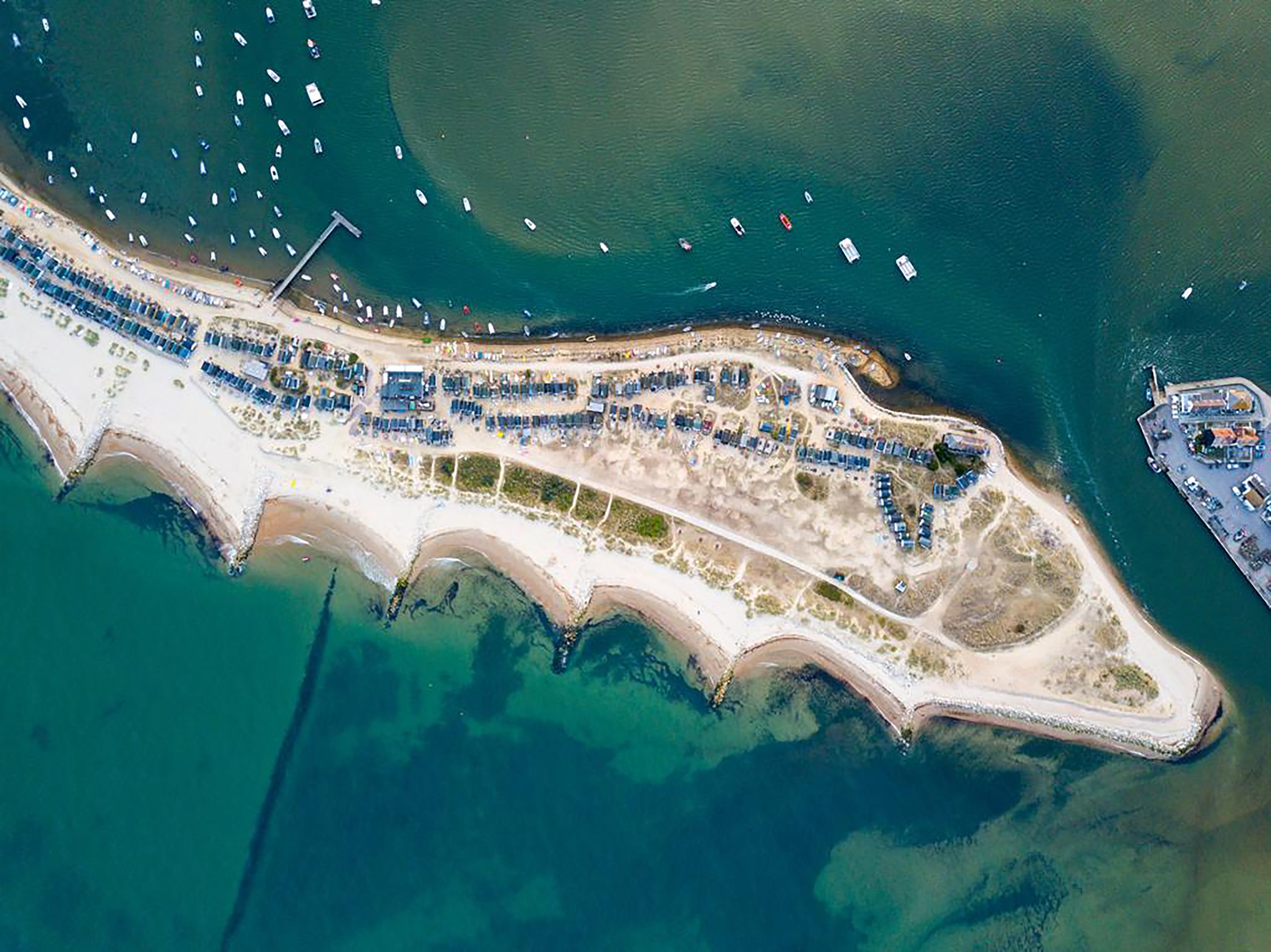
Pete and his wife Kat, who both grew up nearby, have designed their ‘forever home’ with as many green credentials as possible. They bought a 1950s two-bedroom bungalow in 2012, which they demolished four years ago to replace with a five-bed house with dual aspect to fit their growing family. From the open-plan living space upstairs, views stretch out west towards Studland and the Purbecks, Boscombe and Bournemouth piers, and east across Christchurch harbour. In the distance, it’s possible on a clear day to see the Needles on the Isle of Wight. Plus, it’s a 10-minute cycle ride to the family beach hut on Mudeford Spit, the place where Pete and Kat first met 27 years ago and where they now watch their four sons, Sonny, 12, Stan, 10, seven-year-old Sid, and Indiana, two, thrive in the salty sea air.
FLOTSAM AND JETSAM
From the sailcloth and decorative nods to beachside living, to the clever use of space and energy-efficient tech, the décor reflects their passions. ‘I designed the whole place from start to finish,’ Pete says. ‘From the retro seaside industrial aesthetics to the use of reclaimed materials I’d been hoarding for years, I knew that with a bit of love and care these things could be turned into something beautiful and unique.’ He once found long planks of ash washed up on the local beach from a container ship – these too were put to good use. ‘We built our entire staircase out of them, the oak deck outside is made from recycled floorboards, and on upstairs we fitted reclaimed gymnasium flooring, complete with court markings.’
Most of the furniture is either from vintage and secondhand shops or, like the sofa, from the tip. ‘Kat is a great seamstress so if things need repairing, she’ll reupholster furniture and give it a new lease of life,’ adds Pete.
The house, timber-frame in essence, is made from structural insulated panels (SIPs), designed and manufactured by Pete’s own building company. More widely used across North America and Europe than in the UK, these are made from two layers of sustainably-harvested timber laminated to the insulation core layer in the middle – they’re lightweight, strong, airtight and well-insulated, so the house stays warm and cosy in winter
and cool throughout summer.
COSY AND COOL
A mechanical heat recovery system filters the incoming fresh air and gets rid of any stale air – but instead of losing warmth, heat is exchanged to incoming air. ‘As well as being brilliantly heat-efficient, the air quality is amazing and we’ve seen a noticeable downturn in coughs and colds since renovating. It’s a much healthier environment to live in,’ remarks Pete. Energy bills are almost zero, the wood-burning stove is plumbed into the heating system, windows are triple-glazed and solar panels on the roof heat the water. Any excess electricity is stored by a Tesla battery or sold back to the grid. Most of the time, this house produces more energy than the Samsons consume.
‘If the weather isn’t good enough to get power from the solar and the battery, we buy energy in from renewable sources. We still have a gas boiler as a back-up during the winter but using gas feels all wrong now,’ adds Kat, who ran an organic catering company before starting a family. She enjoys entertaining in the open-plan living space. ‘I love cooking with the induction cooker that’s ultimately powered by the sun. When all the bi-fold doors and windows are wide open, the house comes alive with the afternoon sun and the sea view.’
BEACH BOYS
The Samson family philosophy is based on eco-conscious, low-carbon principles – they rarely fly, they drive an electric van and grow their own veg. Their lives are entwined with the ocean. Kat swims in the sea every morning during the year, without a wetsuit, and the boys are involved with Southbourne Surf Life Saving Club. ‘It’s awesome for their sea confidence and it’s great to see them forming strong friendships – the club is a big part of our lives,’ she says. ‘We encourage their connection with the sea on every level; they love seeing the resident seal or a pod of dolphins following mackerel in the bay. They surf, paddleboard, bodysurf, swim and snorkel with us. They’re real water babies.’
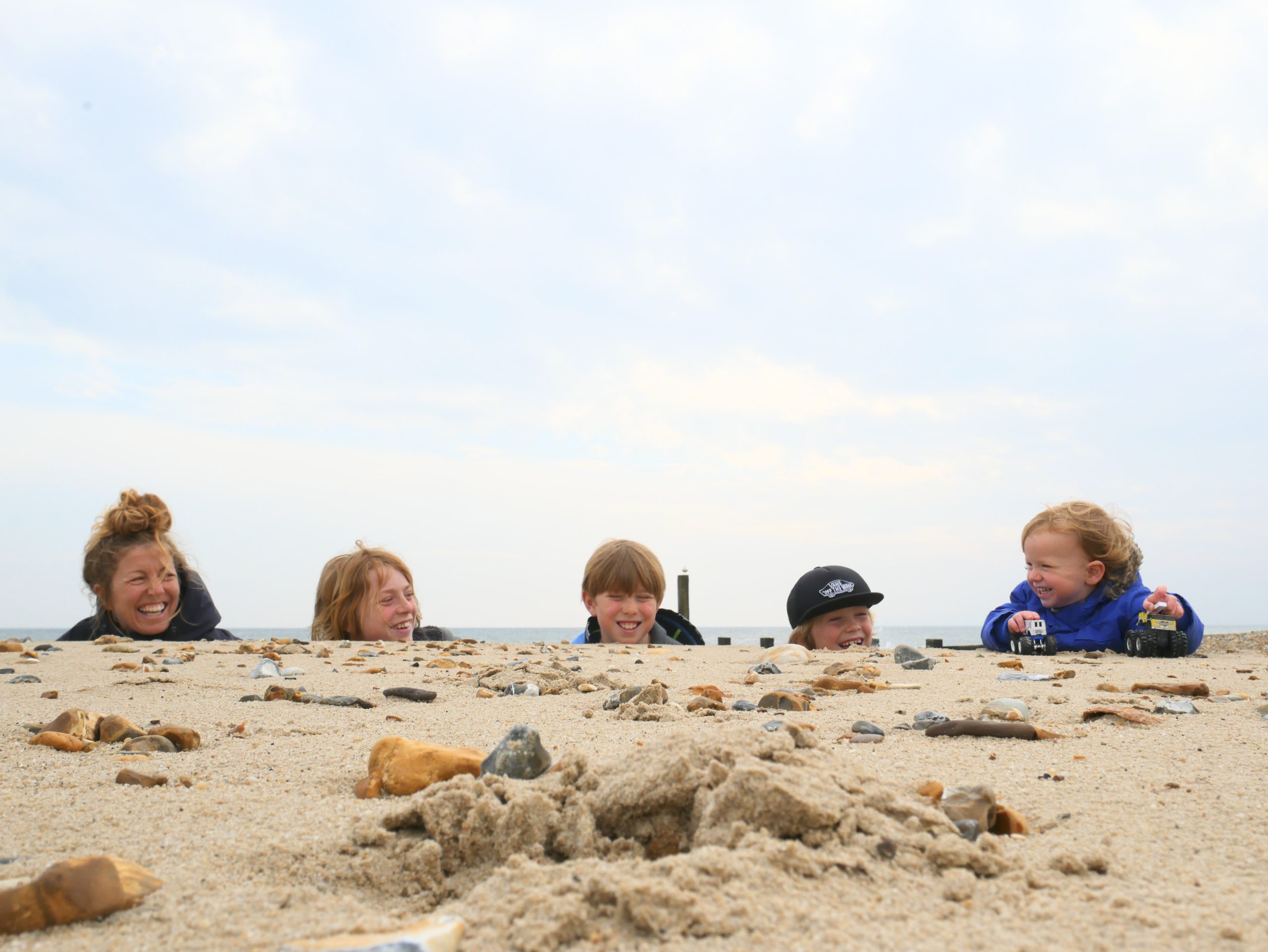
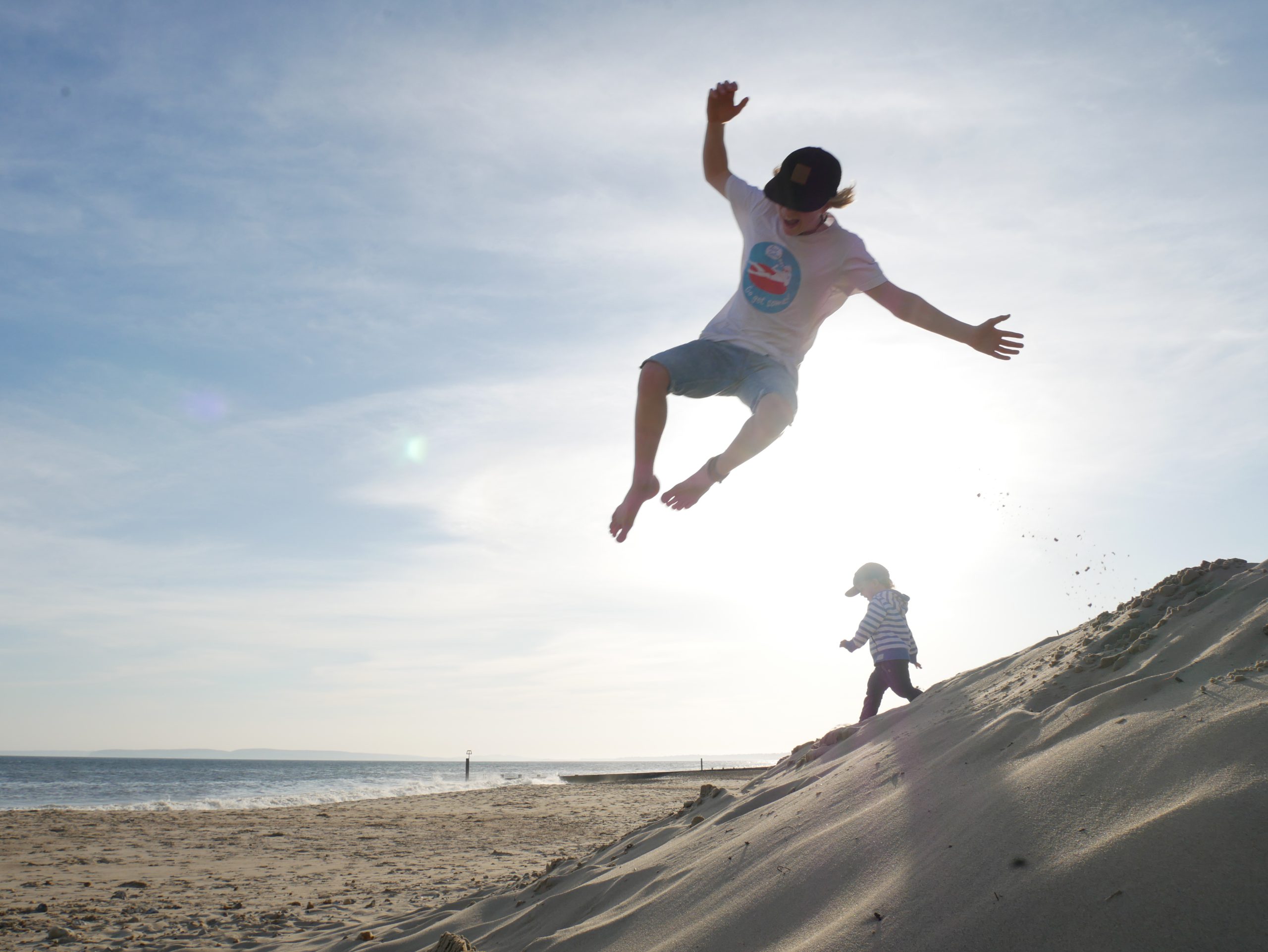
Pete has his own happy childhood memories of summers spent at the family beach hut in Mudeford and still loves the simplicity of this kind of coastal living. ‘These small places forced us into the natural world and allowed us just to be kids by the sea, enjoying all those things that come with growing up here.’ He’s also fitted out campervans and lived in boats, abroad and closer to home in Lymington. ‘That led me to appreciate the necessity for small space design and build – I enjoy the intricacies and novelties that come with that. Some things can be so multi-functional and every design consideration has a knock-on effect.’
HOT HUTS
Twenty years ago, Pete founded Ecologic Developments, a company crafting beach huts and environmentally-friendly rebuilds after his dad asked him to rebuild the family beach hut in Mudeford. ‘I’d done some labouring on building sites abroad and realised how inefficient they were. The construction industry is incredibly energy-hungry and shockingly wasteful,’ says Pete, who has since gone on to build 55 more beach huts along Mudeford Spit, hundreds around the country, and many more renovations besides. Now, he heads a team of seven that expands fourfold for certain projects.
‘Bricks and mortar are old technology – we urgently need to change our ways to minimise our environmental impact,’ says Pete. He manufactures SIPs at his New Forest workshop to use for creating beach huts and modular buildings. ‘This is the eco-friendly way to build houses that are robust and energy-efficient.’ He pushed the boundaries to extremes when building his own seaside eco-home. ‘Our rebuild challenges preconceptions,’ he says. ‘It’s like a mini power station and we could recycle every last bit of this house – that’s just how it should be.’
To find out more about Ecologic’s beach huts, and to source SIPs for building projects, go to ecologic-sips.co.uk. For every confirmed SIPs order made by a coast reader, Pete will donate £500 to the Marine Conservation Society.
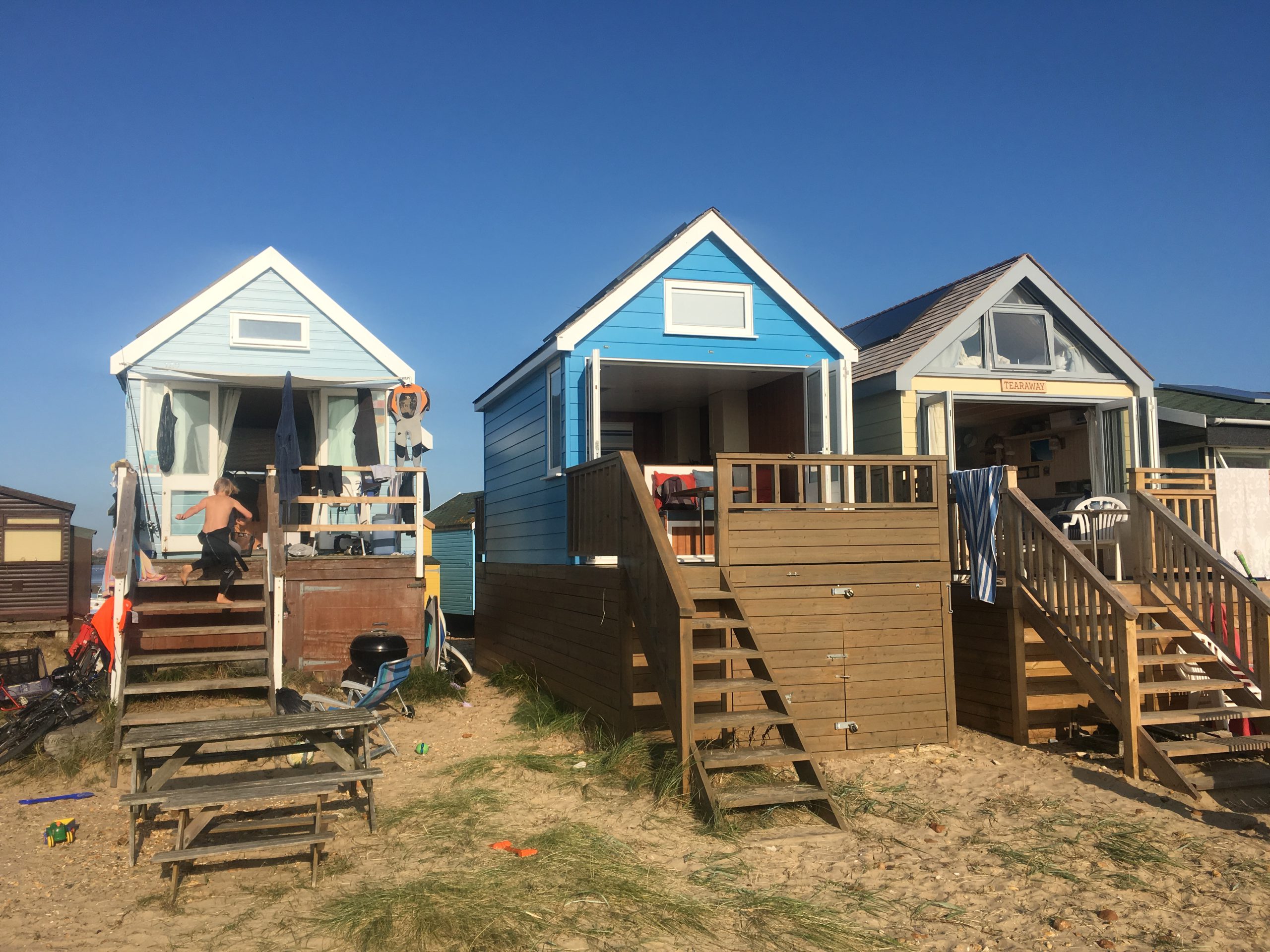
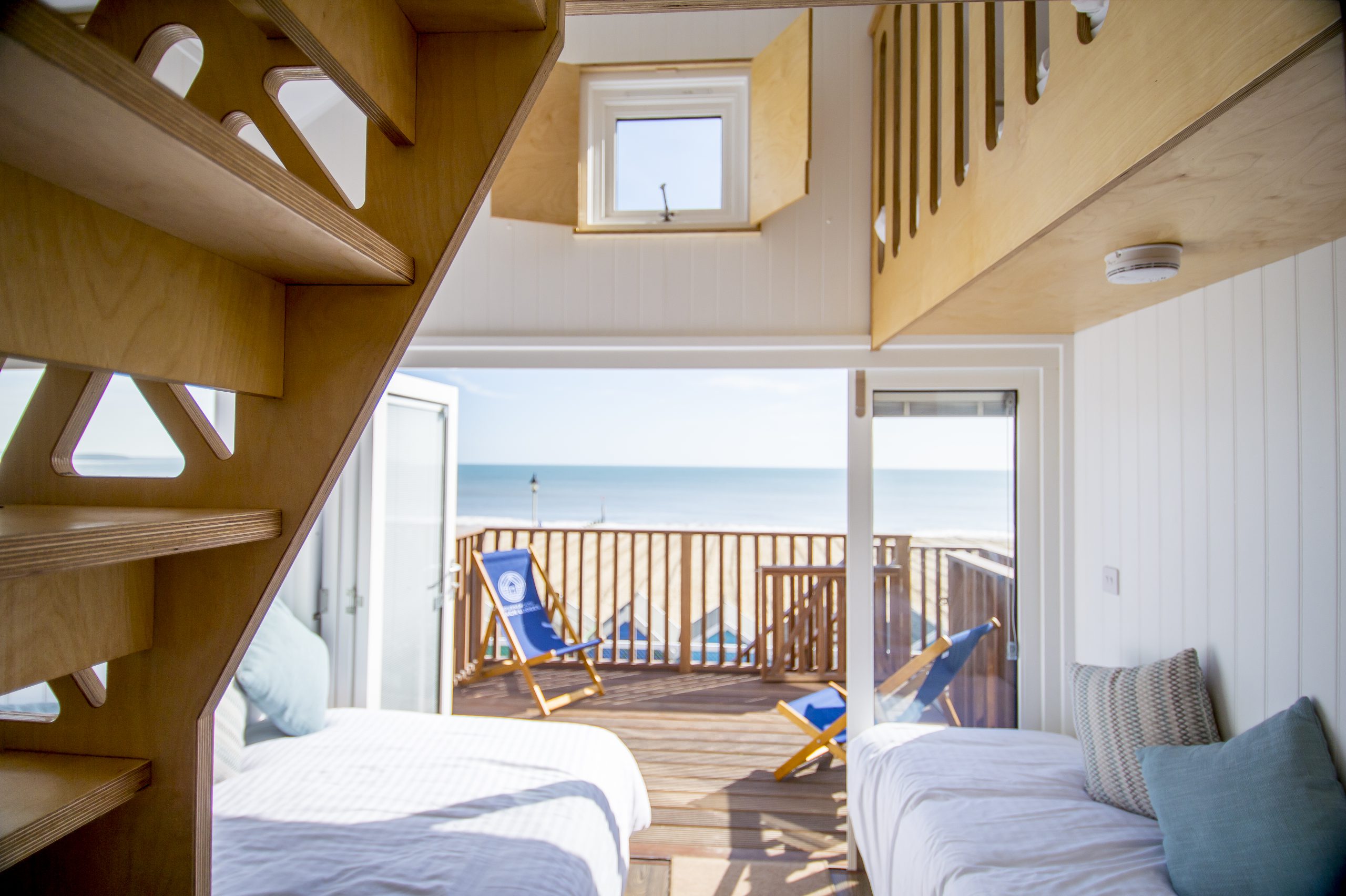
Pete’s 5 best seaside spots
1. Ice cream pit-stop. ‘If we’re enjoying a lazy day at the beach hut on Mudeford Spit, we’ll grab delicious takeaway pizzas and ice cream from The Beach House Café.’ (beachhousecafe.co.uk).
2. Beachside restaurant. ‘It’s a real treat for us to take a boat to the Isle of Wight, where we love to stop off at The Hut at Colwell Bay near Freshwater.’ (thehutcolwell.co.uk).
3. Fishing haunt. ‘We’ll either potter up the harbour after a break at the beach hut or else I will go spearfishing around Mudeford Spit.’
4. Top beach. ‘Studland Beach is beautiful – we don’t join in with the nudists but the water clarity and shellfish collecting is mega fun, the kids love it.’
5. Paddleboard spot. ‘First thing out the front of the house while trailing a mackerel line is a pretty beautiful way to start the day.’

